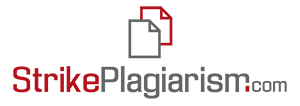Retinal apoptosis and the effect of tyrosine kinase inhibition in experimental diabetes
DOI:
https://doi.org/10.31288/oftalmolzh202353440Keywords:
diabetic retinopathy, immunohistochemistry, immunoblotting, streptozotocin, imatinib, caspase-3, Bax, Bcl-xlAbstract
Background: It is important to develop orbital hydrogel implants capable of depositing drugs (particularly, antimicrobial and anticancer drugs).
Purpose: To assess antimicrobial effects of hybrid hydrogel implants containing gold nanoparticles and albucide and developed for reconstructive surgery in the orbit and periorbital area.
Material and Methods: A 30% aqueous solution of albucide was used in the study. Antimicrobial activity of synthesized hydrogels was determined using Escherichia coli ATCC 25922, Enterococcus faecalis ATCC 29213, Staphylococcus aureus ATCC 25923 and Pseudomonasa eruginosa ATCC 27853 strains.
Results: All the synthesized samples of orbital hydrogel implants were sterile.
The synthesized hydrogels and hydrogel nanocomposites with incorporated Au nanoparticles demonstrated bacteriostatic effects against E. Coli ATCC 25922, E. Faecalis ATCC 29213, and S. Aureus ATCC 25923 strains, and bactericidal effects against P. Aeruginosa ATCC 27853 strain. This study also demonstrated marked bactericidal effects of hybrid hydrogel implants incorporating both Au nanoparticles and albucide.
Conclusion: Orbital hydrogel implants were found to be sterile after being sealed into polypropylene bags and steam sterilized at 121 °C for 20 minutes. Our findings of bacteriostatic and bactericidal effects of the synthesized hydrogels and hydrogel nanocomposites containing Au nanoparticles and albucide against bacterial strains of interest will allow for the absence of, or low probability of bacterial contamination in applications of these hydrogels in implants.
References
Wong TY, Sabanayagam C. Strategies to Tackle the Global Burden of Diabetic Retinopathy: From Epidemiology to Artificial Intelligence. Ophthalmologica. 2020;243(1):9-20. https://doi.org/10.1159/000502387
Sun H, Saeedi P, Karuranga S, Pinkepank M, Ogurtsova K, Duncan BB, Stein C, Basit A, Chan JCN, Mbanya JC, Pavkov ME, Ramachandaran A, Wild SH, James S, Herman WH, Zhang P, Bommer C, Kuo S, Boyko EJ, Magliano DJ. IDF Diabetes Atlas: Global, regional and country-level diabetes prevalence estimates for 2021 and projections for 2045. Diabetes Res Clin Pract. 2022 Jan;183:109119. https://doi.org/10.1016/j.diabres.2021.109119
Wang W, Lo ACY. Diabetic Retinopathy: Pathophysiology and Treatments. Int J Mol Sci. 2018 Jun 20;19(6):1816. https://doi.org/10.3390/ijms19061816
Brownlee M. The pathobiology of diabetic complications: a unifying mechanism. Diabetes. 2005 Jun;54(6):1615-25. https://doi.org/10.2337/diabetes.54.6.1615
Elmore S. Apoptosis: a review of programmed cell death. Toxicol Pathol. 2007 Jun;35(4):495-516. https://doi.org/10.1080/01926230701320337
Eskandari E, Eaves CJ. Paradoxical roles of caspase-3 in regulating cell survival, proliferation, and tumorigenesis. J Cell Biol. 2022 Jun 6;221(6):e202201159. https://doi.org/10.1083/jcb.202201159
Van Opdenbosch N, Lamkanfi M. Caspases in Cell Death, Inflammation, and Disease. Immunity. 2019 Jun 18;50(6):1352-1364. https://doi.org/10.1016/j.immuni.2019.05.020
Abu-El-Asrar AM, Dralands L, Missotten L, Al-Jadaan IA, Geboes K. Expression of apoptosis markers in the retinas of human subjects with diabetes. Invest Ophthalmol Vis Sci. 2004 Aug;45(8):2760-6. https://doi.org/10.1167/iovs.03-1392
Wu W, Xie Z, Zhang Q, Ma Y, Bi X, Yang X, Li B, Chen J. Hyperoside Ameliorates Diabetic Retinopathy via Anti-Oxidation, Inhibiting Cell Damage and Apoptosis Induced by High Glucose. Front Pharmacol. 2020 May 29;11:797. https://doi.org/10.3389/fphar.2020.00797
Hernández C, García-Ramírez M, Corraliza L, Fernández-Carneado J, Farrera-Sinfreu J, Ponsati B, González-Rodríguez A, Valverde AM, Simó R. Topical administration of somatostatin prevents retinal neurodegeneration in experimental diabetes. Diabetes. 2013 Jul;62(7):2569-78. https://doi.org/10.2337/db12-0926
Gavi S, Shumay Е, Wang Н, Malbon С. G-protein-coupled receptors and tyrosine kinases: crossroads in cell signaling and regulation. Trends Endocrinol Metab. 2006;17(2): 46-52. https://doi.org/10.1016/j.tem.2006.01.006
Maruyama IN. Mechanisms of activation of receptor tyrosine kinases: monomers or dimers. Cells. 2014 Apr 22;3(2):304-30. https://doi.org/10.3390/cells3020304
Siddle K. Molecular basis of signaling specificity of insulin and IGF receptors: neglected corners and recent advances. Front Endocrinol (Lausanne). 2012 Feb 28;3:34. https://doi.org/10.3389/fendo.2012.00034
Liu Y, Chen J, Liang H, Cai Y, Li X, Yan L, Zhou L, Shan L, Wang H. Human umbilical cord-derived mesenchymal stem cells not only ameliorate blood glucose but also protect vascular endothelium from diabetic damage through a paracrine mechanism mediated by MAPK/ERK signaling. Stem Cell Res Ther. 2022 Jun 17;13(1):258. https://doi.org/10.1186/s13287-022-02927-8
Guo Y, Guo C, Ha W, Ding Z. Carnosine improves diabetic retinopathy via the MAPK/ERK pathway. Exp Ther Med. 2019 Apr;17(4):2641-2647. Epub 2019 Jan 30. https://doi.org/10.3892/etm.2019.7223
Liu F, Ma Y, Xu Y. Taxifolin Shows Anticataractogenesis and Attenuates Diabetic Retinopathy in STZ-Diabetic Rats via Suppression of Aldose Reductase, Oxidative Stress, and MAPK Signaling Pathway. Endocr Metab Immune Disord Drug Targets. 2020;20(4):599-608. https://doi.org/10.2174/1871530319666191018122821
Hymowitz SG, Malek S. Targeting the MAPK Pathway in RAS Mutant Cancers. Cold Spring Harb Perspect Med. 2018 Nov 1;8(11):a031492. https://doi.org/10.1101/cshperspect.a031492
Waller CF. Imatinib Mesylate. Recent Results Cancer Res. 2018;212:1-27. https://doi.org/10.1007/978-3-319-91439-8_1
Boneva SK, Wolf J, Hajdú RI, Prinz G, Salié H, Schlecht A, et al. In-Depth Molecular Characterization of Neovascular Membranes Suggests a Role for Hyalocyte-to-Myofibroblast Transdifferentiation in Proliferative Diabetic Retinopathy. Front Immunol. 2021 Nov 2;12:757607. https://doi.org/10.3389/fimmu.2021.757607
Dabbs D. Diagnostic Immunohistochemistry, 4th Edition Theranostic and genomic applications. 2014. 960 p.
Subburaj Y, Cosentino K, Axmann M, Pedrueza-Villalmanzo E, Hermann E, Bleicken S, Spatz J, García-Sáez AJ. Bax monomers form dimer units in the membrane that further self-assemble into multiple oligomeric species. Nat Commun. 2015 Aug 14;6:8042. https://doi.org/10.1038/ncomms9042
Wang T, Zhang Z, Song C, Sun L, Sui X, Qu Q, Liu J. Astragaloside IV protects retinal pigment epithelial cells from apoptosis by upregulating miR 128 expression in diabetic rats. Int J Mol Med. 2020 Jul;46(1):340-350. https://doi.org/10.3892/ijmm.2020.4588
Hombrebueno JR, Ali IH, Xu H, Chen M. Sustained intraocular VEGF neutralization results in retinal neurodegeneration in the Ins2(Akita) diabetic mouse. Sci Rep. 2015 Dec 16;5:18316. https://doi.org/10.1038/srep18316
Damian I, Nicoară SD. Correlations between Retinal Arterial Morphometric Parameters and Neurodegeneration in Patients with Type 2 Diabetes Mellitus with No or Mild Diabetic Retinopathy. Medicina (Kaunas). 2021 Mar 5;57(3):244. https://doi.org/10.3390/medicina57030244
Simó R, Stitt AW, Gardner TW. Neurodegeneration in diabetic retinopathy: does it really matter? Diabetologia. 2018 Sep;61(9):1902-1912. https://doi.org/10.1007/s00125-018-4692-1
Himasa FI, Singhal M, Ojha A, Kumar B. Prospective for Diagnosis and Treatment of Diabetic Retinopathy. Curr Pharm Des. 2022;28(7):560-569. https://doi.org/10.2174/1381612827666211115154907
Stem MS, Gardner TW. Neurodegeneration in the pathogenesis of diabetic retinopathy: molecular mechanisms and therapeutic implications. Curr Med Chem. 2013;20(26):3241-50. https://doi.org/10.2174/09298673113209990027
Shanab AY, Nakazawa T, Ryu M, Tanaka Y, Himori N, Taguchi K, Yasuda M, Watanabe R, Takano J, Saido T, Minegishi N, Miyata T, Abe T, Yamamoto M. Metabolic stress response implicated in diabetic retinopathy: the role of calpain, and the therapeutic impact of calpain inhibitor. Neurobiol Dis. 2012 Dec;48(3):556-67. https://doi.org/10.1016/j.nbd.2012.07.025
Sasaki M, Ozawa Y, Kurihara T, Kubota S, Yuki K, Noda K, Kobayashi S, Ishida S, Tsubota K. Neurodegenerative influence of oxidative stress in the retina of a murine model of diabetes. Diabetologia. 2010 May;53(5):971-9. https://doi.org/10.1007/s00125-009-1655-6
Wu C, Xu K, Liu W, Liu A, Liang H, Li Q, Feng Z, Yang Y, Ding J, Zhang T, Liu Y, Liu X, Zuo Z. Protective Effect of Raf-1 Kinase Inhibitory Protein on Diabetic Retinal Neurodegeneration through P38-MAPK Pathway. Curr Eye Res. 2022 Jan;47(1):135-142. https://doi.org/10.1080/02713683.2021.1944644
Downloads
Published
How to Cite
Issue
Section
License
Copyright (c) 2023 Ziablitsev S.V., Vodianyk V.V.

This work is licensed under a Creative Commons Attribution 4.0 International License.
This work is licensed under a Creative Commons Attribution 4.0 International (CC BY 4.0) that allows users to read, download, copy, distribute, print, search, or link to the full texts of the articles, or use them for any other lawful purpose, without asking prior permission from the publisher or the author as long as they cite the source.
COPYRIGHT NOTICE
Authors who publish in this journal agree to the following terms:
- Authors hold copyright immediately after publication of their works and retain publishing rights without any restrictions.
- The copyright commencement date complies the publication date of the issue, where the article is included in.
DEPOSIT POLICY
- Authors are permitted and encouraged to post their work online (e.g., in institutional repositories or on their website) during the editorial process, as it can lead to productive exchanges, as well as earlier and greater citation of published work.
- Authors are able to enter into separate, additional contractual arrangements for the non-exclusive distribution of the journal's published version of the work with an acknowledgement of its initial publication in this journal.
- Post-print (post-refereeing manuscript version) and publisher's PDF-version self-archiving is allowed.
- Archiving the pre-print (pre-refereeing manuscript version) not allowed.












